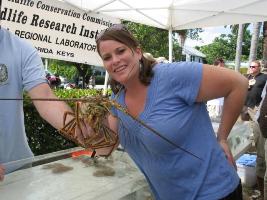 On Jan. 1, 18 Gulf of Mexico commercially-caught grouper and tilefish species were added to the region’s individual fishing quota (IFQ) program, a type of catch share. This newly expanded program is a big conservation victory. Now, 19 valuable Gulf fisheries are being managed under a tool proven to rebuild struggling fish stocks.
On Jan. 1, 18 Gulf of Mexico commercially-caught grouper and tilefish species were added to the region’s individual fishing quota (IFQ) program, a type of catch share. This newly expanded program is a big conservation victory. Now, 19 valuable Gulf fisheries are being managed under a tool proven to rebuild struggling fish stocks.
This move is good for small and large fishing businesses. A year-round fishing season is just one of many benefits. See National Fisherman’s article on how the new IFQ program is already making a difference.
Unfortunately, grouper fishermen in the Southeast aren’t faring as well under traditional management. They’re in the middle of a four month fishing closure. This isn’t just hard on fishermen, it’s hard on local restaurants and other businesses too. Southeast fishery managers should consider catch shares to eliminate these devastating season closures and bring fish populations back to health quickly.
Finally, we want to congratulate the fishermen, Gulf of Mexico Fisheries Management Council and others who worked so hard to add grouper and tilefish to the Gulf’s IFQ. We are excited to see the progress that these fisheries will make in the coming year.










 A few weeks ago, I attended the
A few weeks ago, I attended the